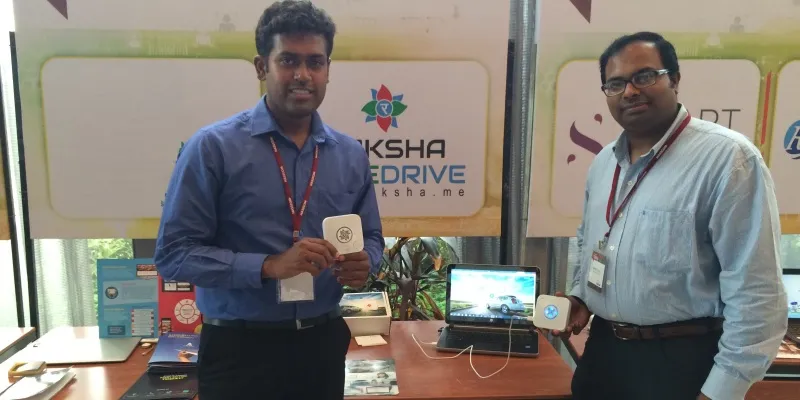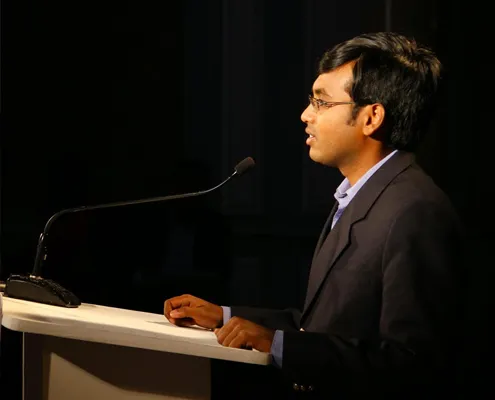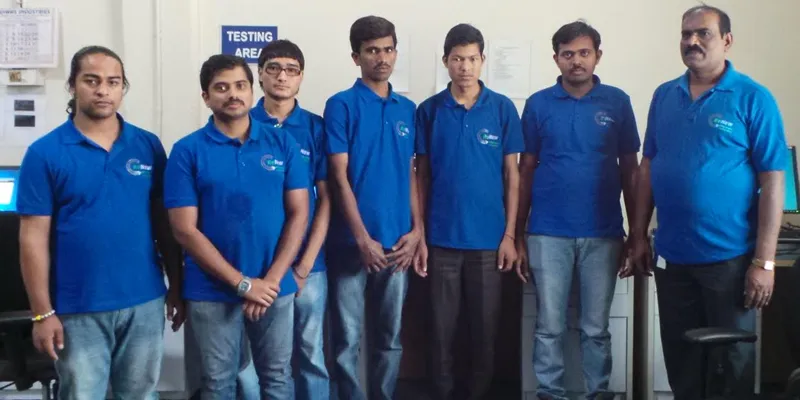Boot the VC, bootstrap -- startups who said no to venture money
Contrary to popular perception, getting VC funding is not the prerequisite to building a successful startup. Read how the startups featured below are thriving without VC money.
Nithin Kamath, Founder and CEO, Zerodha

A one-of-its-kind brokerage firm, Zerodha has memberships on all the stock, commodity, and currency exchanges in India. The team is believed to be one of the first in India to disrupt the existing pricing structure by introducing a flat fee-per-trade model.
Why did you not raise VC money?
We have been profitable from the start, so never felt the need to. The only reason would have been for advertising. We have a very small target audience and didn't make sense to spend a lot of money to reach out to such a small audience.
What was your starting capital?
Rs 1.75 crore. Most of it as exchange refundable deposits.
How did you raise that?
Personal savings.
What steps did you take in the first six months to make your money go a long way?
I don't know think we did anything different to what we are doing today. We made sure to spend only when required, and we didn't hire people just for the heck of it.
What are the pros and cons of bootstrapping?
Downside: Growing organically takes longer, so this gives an opportunity for the competition which has raised funds to catch up. Personal money is also like ‘sacred money’, taking aggressive bets needed to grow the business might be tougher to make.
Upside: Gives you freedom to focus on only growing the business and not having to answer why/when/what, spend time convincing or avoid getting influenced by investors.
If you had to raise money in the future what will you raise it for?
Advertising will be the only reason I guess.
3 tips for entrepreneurs to build their business without VC money?
Without external money at play, it is important to have an edge in the business you are trying to build. Either technological edge or the experience of having worked in the industry.
Focus on doing whatever possible to turn profitable, everything else, including the VC money will follow.
Build the right team, people who are in it only for money will not stay for too long if not able to match payscale of their peers. Keeping pace in terms of remuneration of VC-backed startups will be very tough.
Himamsu Popuri, CEO & MD, Nuevosol Energy Pvt. Ltd.

Hyderabad-based Nuevosol Energy Private Limited is a startup established by five friends -- four IITians and a BITS Pilani alumni. The company provides cost-effective solutions to mount solar panels, thereby encouraging adoption of solar rooftop mounting systems, alternate energy solutions in the country.
Why did you not raise VC money?
Typically venture capital funds in India in the last three-five years have been attracted to firms which have a presence in e-commerce or firms which showed great numbers like a B2C does. There was always a scarcity of funds which concentrated on small to medium range of investment size. Also, solar was considered as one of the risky investments since most of the grid connected power plants are incentivised and investors were not sure if the projects were viable considering the poor state of the discoms in the country. We personally had a very tough time convincing VC investors that Nuevosol was primarily a product developer which happens to be in the solar sector, which was not as lucrative as the e-commerce industry.
What was your starting capital? How did you raise that?
Nuevosol started with a share capital of Rs 5 lakh which was used to construct the first project of 1 MW. The proceeds from this project were again re-invested into the company which helped in securing additional projects. We subsequently raised another Rs 40 lakh. This too was inadequate since the company was growing at an exponential pace. The only viable option available was to raise capital by raising bank loans, for which the directors with the help of their families and friends have given personal assets as collaterals. With the help of banks and loans from friends and family members, we were able to raise Rs 40 crore as working capital till date to continue the business.
What steps did you take in the first six months to make your money go a long way?
We believe that solar power is viable, scalable, and would definitely be a game changer in the energy sector. Having said that, it was up to us to scale up the company with this vision. Stringent quality measures in designing, manufacturing and execution were adopted. We also strongly believed in R&D and were always innovating new products and solutions. The sector also received a huge boost from the government with the JNNSM’s plan to install 175 GW by the year 2022.
What are the pros and cons of bootstrapping?
Bootstrapping is definitely a good idea for startups which operate in the small to medium scale. The returns earned by the promoters give them the confidence to re-invest into the dream they had conjured. This helps with growing the company by leaps and bounds. It is also a great learning experience for the entrepreneur as they can get their hands on the minutest operational detail of the business.
However, once the firm reaches a considerable scale in terms of revenue and man power, the promoters should look for avenues to raise capital, since raising debt in our country has severe limitations. Also for a firm to grow in lines with the sector and its evolution over the years; bootstrapping may not be a good idea since it wouldn’t provide much scope to tap into the unlimited potential that the sector holds.

If you had to raise money in the future what will you raise it for?
The funding that we intend to raise will be disbursed to two verticals that are critical for furthering the sector as a whole. First, we would want to get creative by pouring in more funds to R&D. As an engineering and design-focused company, we have ongoing processes to re-invest about 10% of our revenues in R&D. Secondly, we are looking to invest into equipment and machinery to have better control over the network. These measures would further consolidate our market share and help us scale up our pace of growth.
3 tips for entrepreneurs to build their business without VC money.
Belief in the business idea is more important than believing in whether he/she would be able to raise capital.
The capital raised by a bootstrapped entrepreneur should be used to grow business with a turn-around time of three-six months. It is not advisable to invest bootstrap capital for long-term gains which are more than a year. This would help the entrepreneur in generating ample revenues and cash flows from the business which can be re-invested into the company.
Bootstrapped firms will always have a limitation on being quickly profitable. Instead of concentrating on profit/margins, entrepreneurs should work towards reducing overheads and improving cash flows. Once the entrepreneur is able to raise capital he/she can then re-focus on profitability by investing or integrating strategically.
Jayanth Jagadeesh, Co-Founder, Elsys Intelligent Devices

Elsys Intelligent Devices is leveraging the combination of hardware, software, analytics, and people to build India’s first Smart Road Safety Platform. SafeDrive is a cool IoT gadget that transforms any car into a connected and safe car. This “first-of-a-kind solution” is designed, developed, and manufactured in India without any institutional investment. The pilot-project for ‘Raksha SafeDrive’ was successfully crowdfunded on KickStarter.
Why did you not raise VC money?
Our inability to attract any institutional funding until now has primarily been because of the nature of our business.
I suppose, companies like ours will have to pursue non-traditional approaches to raising capital until establishing a sustainable business. From an investment point of view, these companies are lucrative for they are positioned closer to the point of transaction (sale) and away from the R&D and manufacturing costs/risks.
The companies that create new products (bottom of the pyramid) are traditionally high-risk endeavours - often demanding a bigger leap of faith, a jump-start in terms of money and resources. Most importantly, it takes valuable time for successive iterations of design and manufacturing before a stable product can demonstrate market traction.
More investors seem to back market-expansion stage than IP and product creation because of low-risk & faster RoI/exit.

How did you raise your starting capital?
We had to invest the personal-savings of the founders up until the prototype stage. After that, we’ve raised some more capital from within the family and extended circle of friends.
What are the pros and cons of bootstrapping?
Positive outcomes
- Frugal innovation! With little money, you’re more likely to discover/invent efficient ways of doing things.
- Having a little money forces you to always explore newer ways and things. With an ear-always-to-the-ground, you’ll become more perceptible to shifting dynamics of the industry and have an advantage in adapting to those changes.
- You’ll become a great negotiator. You bargain hard, and set the price right with vendors and customers.
- You’ll build a solution that is worthy of customer’s money. Obviously, you can’t bribe them with discounts & incentives.
Downsides
- A considerable amount of energy and time gets spent (often too frequently) in optimising expenses and solicit investments.
If you had to raise money in the future what will you raise it for?
Market expansion and inventory management.
Tips for entrepreneurs to build their business without VC money?
- House first, palace later! Start with a sturdy MVP (Minimum Viable Product). Your first version of the solutions does not need to have an exhaustive list of features.
- Early bird gets the work! Go to market as early as possible. When that rubber meets the road, there are bound to be several revelations that one couldn’t have planned for in the boardroom. Learn from those revelations as early as possible.
- Leverage consultants/freelance network. It is most likely that your biggest expense will be employee salaries. Use freelances on a project-basis wherever possible.
- Crowdfunding! This is a good option to explore if you’re building something that can excite customers even before it’s built.
Rohan Shenoy, CEO, Build-Inn
Build-Inn is an online marketplace for construction services and materials where customers can directly interact with quality consultants and verified professionals. It also makes luxury affordable by providing compact interior offerings with designs specially curated by Build-Inn professionals.
Why did you not raise VC money?
There are various reasons why we decided not to raise VC money at an initial stage. Accepting funds before figuring out how to make a business profitable on its own seemed like a big risk. We did not intend to hire and spend on things which would not help us in the long run. Before scaling up and spending heavily on resources, we wanted the business to be profitable. Build-Inn, and its product are trying to bring an innate traditional business to the online forum. More than acceptance, it needed validity before going full-fledged into the market. The idea itself needed time to ripen, and the sector is still a neglected one from the eyes of VCs although the market size is around $3.4 million, just in Bengaluru.

What was your starting capital?
We started out with Rs 1 lakh, which was spent in the initial registration and Trademark.
How did you raise that?
That’s when our angel investor kicked in another Rs 10 lakh, to help us keep the business running. He believed in the team, the vision and moreover he saw potential in the product.
What steps did you take in the first six months to make your money go a long way?
This is probably what I have told everyone who has asked me how to survive while bootstrapping. Find a team which believes in your vision as much as you do. We validated the business while creating enough profit to sustain. We took baby steps and got the business to a stable position so as to take a leap of faith post that, while taking risks.
What are the pros and cons of bootstrapping?
Upside: You learn and do things you wouldn’t have thought about. You challenge yourself at every step. You take charge and make things happen instead of having a platter ready in front of you. You do not answer to anyone but yourself. There is a constant need to hustle and believe in your and your team’s skill sets.
Downside: Bootstrapping can take a lot of time and energy. It also forces you to go it alone, which people find daunting because of the isolation. Most of the times, VCs provide much more than just money. They provide you with advice and networking opportunities. Bootstrappers have to build all their relationships themselves.
If you had to raise money in the future what will you raise it for?
Money raised shall be used for talent acquisition and marketing enhancement.
3 tips for entrepreneurs to build their business without VC money?
-Believe in your team and their abilities.
-Use the VC fund as a contingency fund, use it only when necessary. The first priority should be breaking even.
-Always envision a bigger goal than what you achieved yesterday. Being stagnant might sink you.
Ritesh Agarwal, CEO, fonepaisa

Bengaluru-based fonePaisa Payment Solutions Pvt. Ltd, is a digital payments aggregator enabling non-cash payment among consumers, merchants, and businesses. It enables both online and brick-and-mortar merchants to accept all digital payment methods using a single account, while consumers can pay using the app or the browser on their smartphone.
Why did you not raise VC money?
fonePaisa believes in creating value before taking external money. Fintech is getting attention from many investors but yet has its share of uncertainty in the regulatory and technology landscape. Though the sector gets more than sufficient attention from the VC community, our focus lies on internal resources and value creation. Also, raising external capital forces you to pay attention to a larger span of items than what is necessary.
What was your starting capital?
Founders started with their own money of Rs 5 crore, split in equity and debt, both.
How did you raise that?
Promoters have put in their personal money in the company and are committed to lay a strong foundation for the future investor.
What steps did you take in the first six months to make your money go a long way?
We hired only those people who are critically required for the growth. Each team member is cherry picked and invited to join fonePaisa by founders themselves, resulting in a more tightly knit unit that is focussed on only one goal – making the company grow, irrespective of day and time.
What are the pros and cons of bootstrapping?
Companies are shutting down like a domino effect, especially after having raised funds recently. Each time, we ask ourselves: “Have we created enough value to protect our future investors’ money?” It is not easy to bootstrap beyond a point because the ecosystem noises start disturbing you. But the maturity of promoters keeps them steady on the ground.
If you had to raise money in the future what will you raise it for?
If we raise money, we shall deploy it part in technology R&D and mostly in sales.
3 tips for entrepreneurs to build their business without VC money?
Don’t wait to raise external money, until you have deep pockets. Survival is more important than pride.
Validate each Sunday, if you are progressing fast…faster…and faster. Pull the plug at the right time and don’t wait for dooms day.
Don’t hire someone who demands an increment within the first year. Such people are waiting for Esops and are not necessarily committed. Each team member must say: “Till death do us part.” Keep costs low.
Mukund BS, Co-founder & CEO, Renew

Renew purchases old computers from large organisations, refurbishes them to make high-quality, low-cost computers available to those Indians who cannot afford an expensive new computer.
Why did you not raise VC money?
We have not actively looked at fundraising because of factors which make our business non-attractive for VC funding
- Our business is something which cannot grow exponentially because of inherent macro-factors like lack of electricity in many parts of India (which we cannot control)
- Low margin business (having higher margins defeats our mission of “Making computers affordable to every Indian”)
- Sundown industry – folks at the bottom of the pyramid prefer buying a smartphone rather than a computer
That doesn’t mean that our business isn’t sustainable or viable. We have grown our business organically through the profits generated from our business.
What was your starting capital? How did you raise that?
We invested Rs 30 lakh to start our business. Our family invested in this venture.
What steps did you take in the first six months to make your money go a long way?
It took almost one year to get all the statutory approvals before our venture was operational. We didn’t hire till we were ready to start our operations. From day one of our operations, we focused on unit economics and this helped us break even by our second year of operations.
What are the pros and cons of bootstrapping?
Bootstrapping gives you the flexibility of running the business on your terms. But one needs to be extremely disciplined and run a tight ship while bootstrapping. When one is bootstrapping, it is important to run quick and small pilots with a definite time duration. If the pilot doesn’t yield the results as expected, accept that it didn’t work and switch to the next plan. There is no luxury of large capital to do large scale or long duration pilots.

If you had to raise money in the future what will you raise it for?
If we had to raise money, we will do it for any of the following
- To consolidate the first-mover advantage in a new product category or new target market where we have a head start
- To spend on tested marketing channels which can accelerate our growth
- When the size of the potential target audience is large and speed of execution is very critical for gaining market share
3 tips for entrepreneurs to build their business without VC money?
Don’t start an organisation if you can’t sustain it for at least three years. Things don’t always pan out as you envisioned in your excel projections.
When you are starting out, there are always many distractions. It is very important to make decisions which have a long-term impact on the organisation and not get tempted by short term gains which might steer you off the path you have envisioned for yourself and the organisation you have founded.
Scale for the sake of scale is meaningless. A business exists to create wealth. If there is no clear monetisation path visible to the entrepreneur, then they should re-evaluate the viability of the business. They will always be at the mercy of the investors to keep them afloat. Ideally, your consumers should be the ones who are funding the growth of your organisation. Ideally, they should miss your organisation’s product or service if it wasn’t available to them tomorrow.











